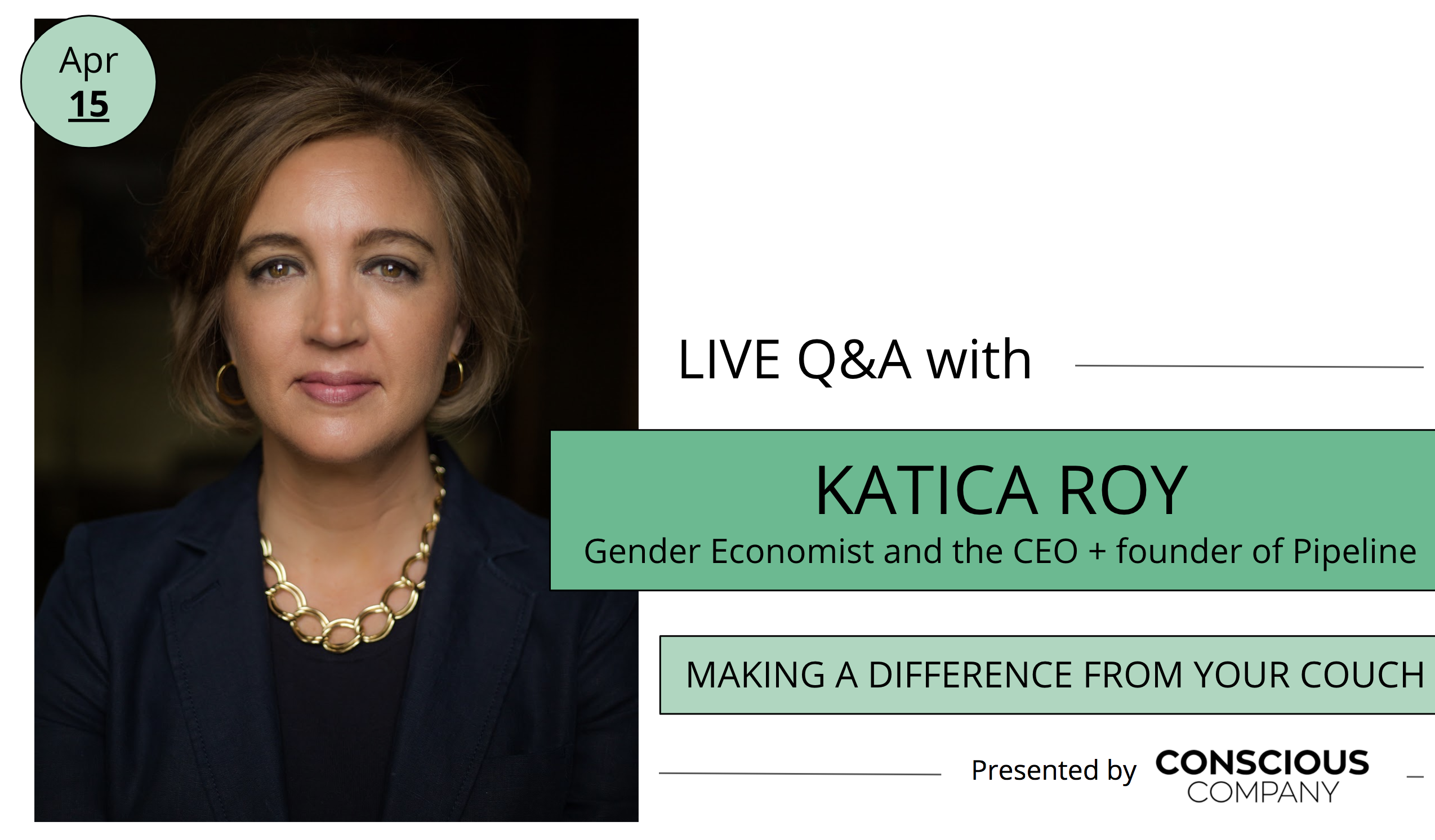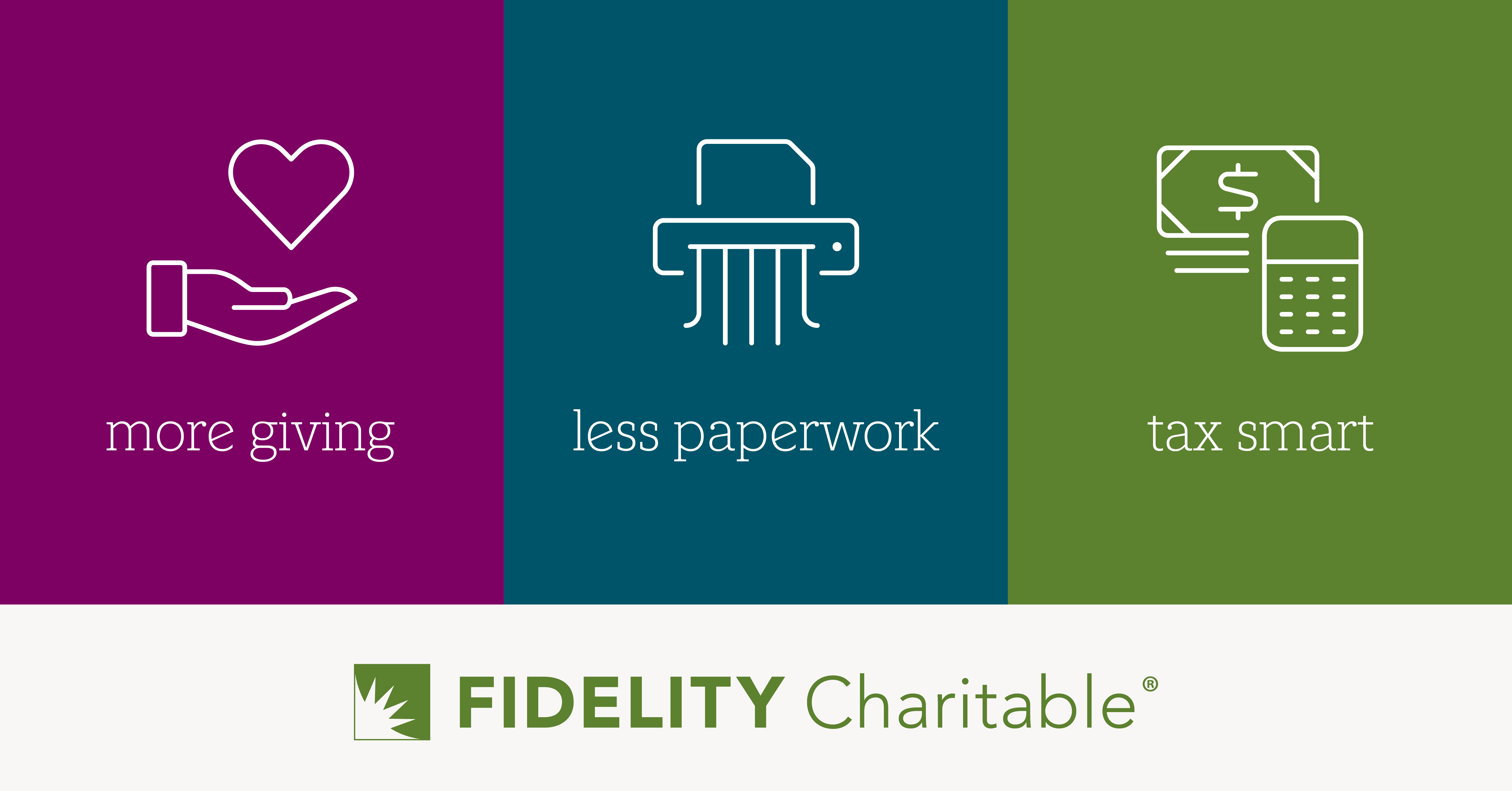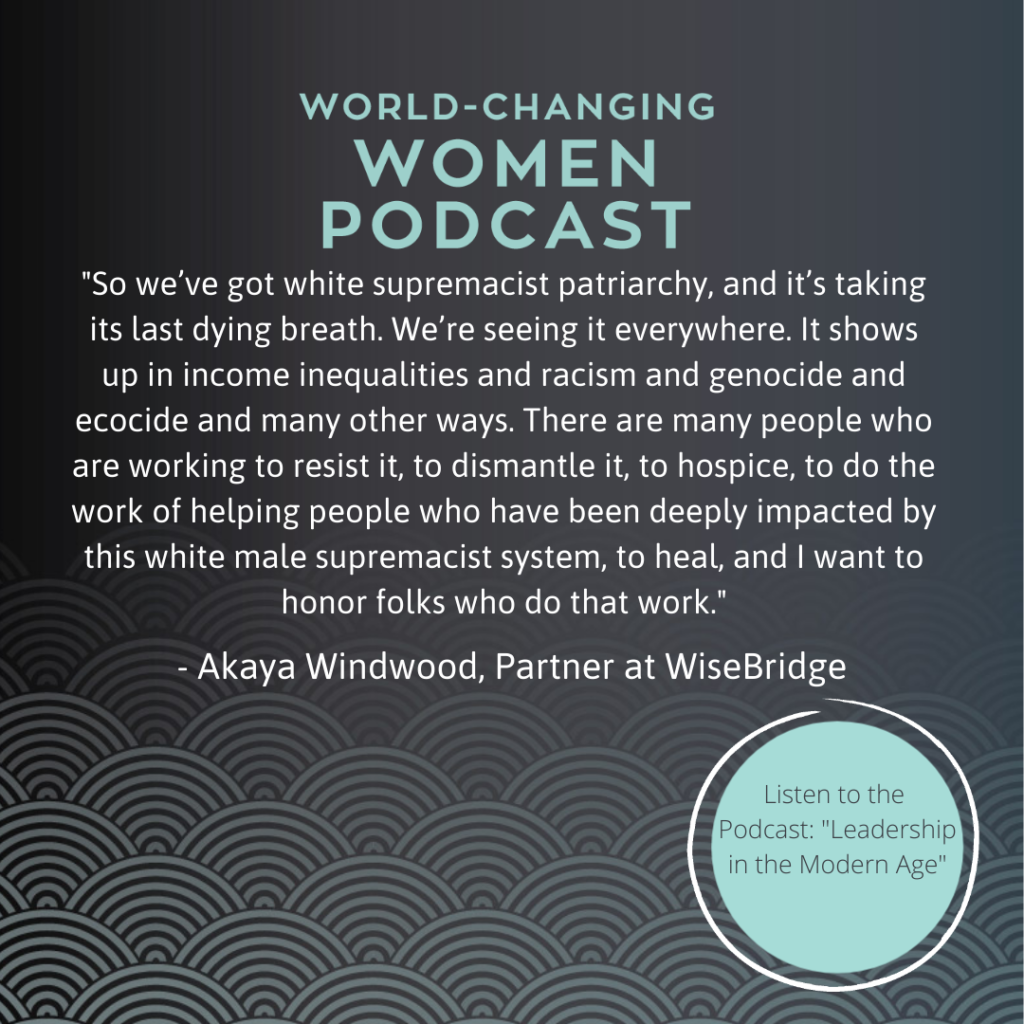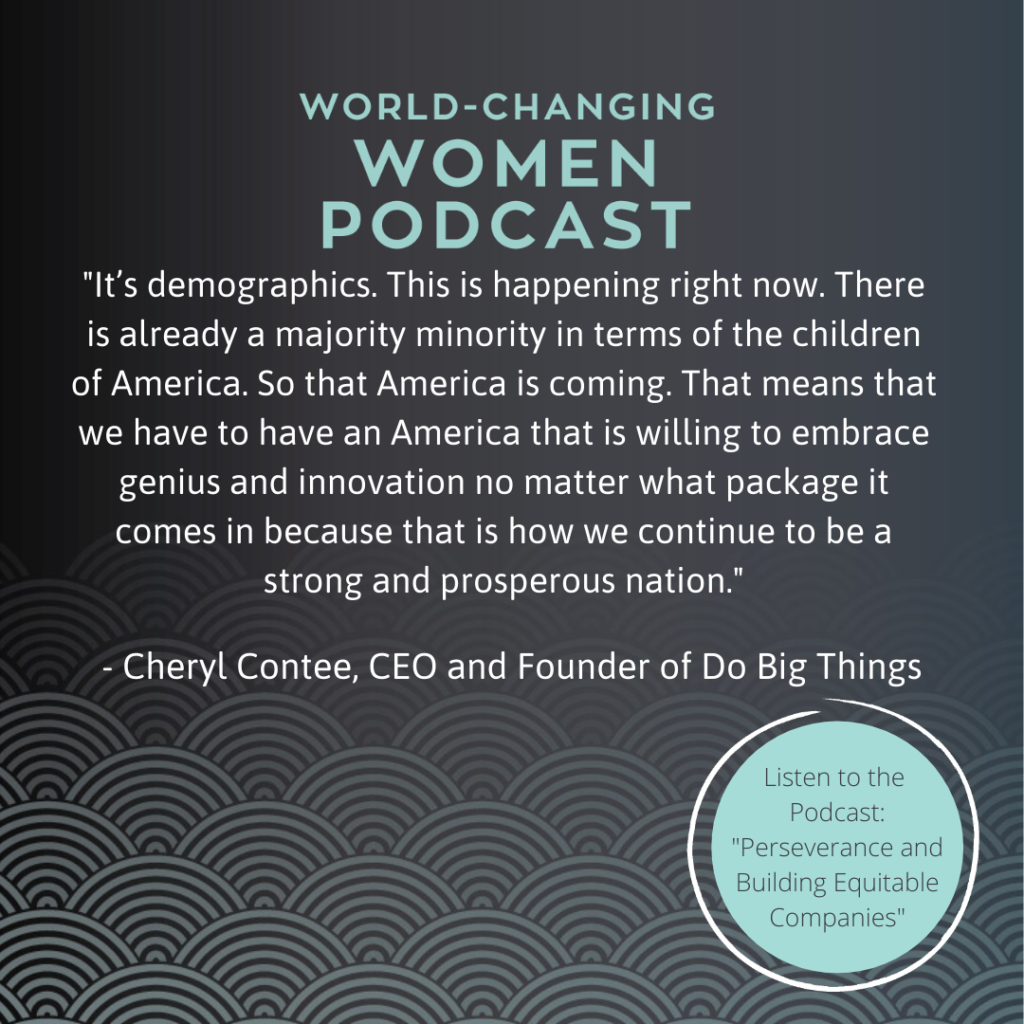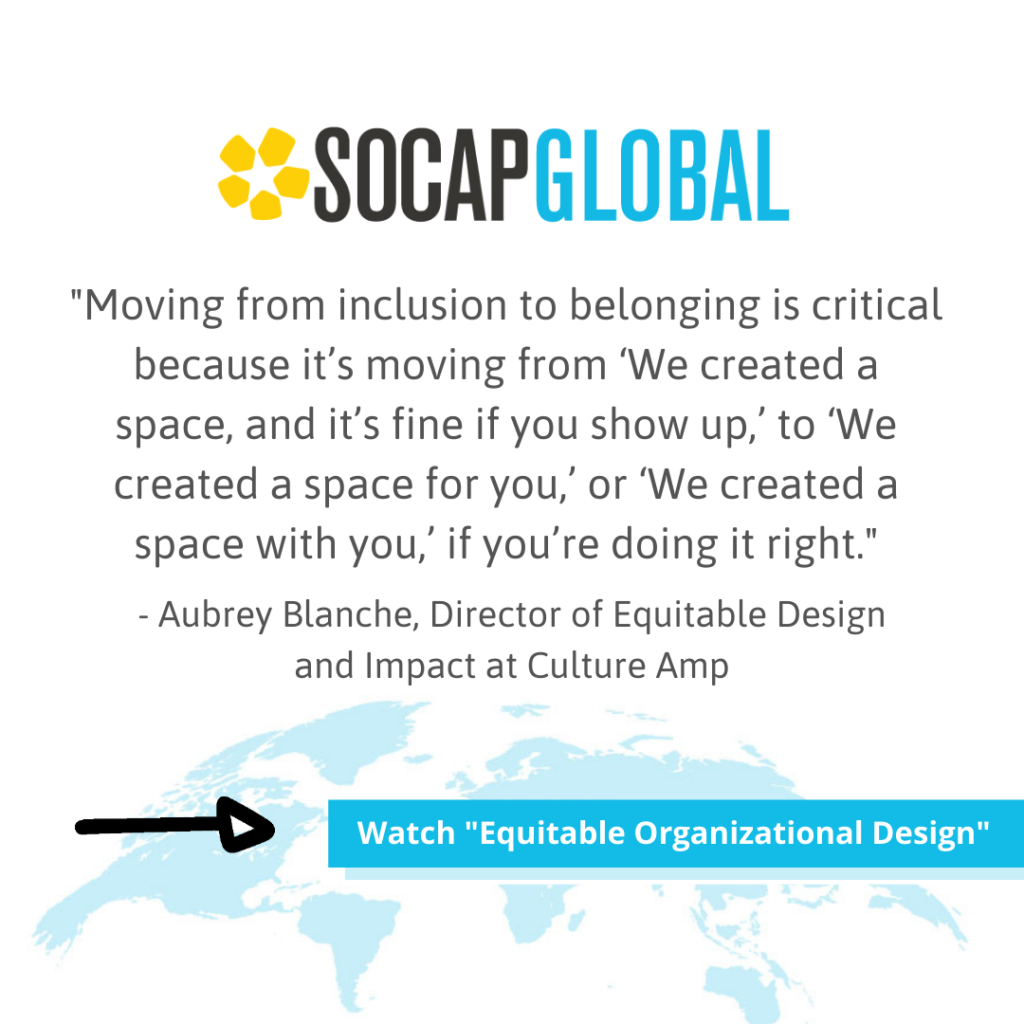Gender Economist and CEO Katica Roy Discusses What Needs to Happen to Build a More Equitable Economy
If we don’t act fast, women are going to bear the brunt of the economic burden created by today’s COVID-19 crisis. For this Q&A, we invited Katica Roy, gender economist and CEO + Founder of Denver-based Pipeline. Pipeline is an award-winning SaaS company that leverages artificial intelligence to identify and drive economic gains through gender equity. It launched the first gender equity app on Salesforce’s AppExchange, and the Pipeline platform was named one of TIME Magazine’s Best Inventions of 2019 and Fast Company’s 2020 World’s Most Innovative Companies.
In our conversation with Katica, we discussed gender equity, gender budgeting in policy-making, and DI&E in the time of COVID-19 and how to make a difference from home. Here are our top takeaways from the conversation:
Advocate: Call Your Representatives
We have to act swiftly to remind our elected officials about this important segment of the economy. If you want to take action today, follow these four easy steps:
1. Locate your leaders in Washington D.C. You have two Senators and one Representative at the national level.
2. Call your Senators and Representatives to request a meeting. You want to discuss the urgency of allocating more economic stimulus specifically for female-founded startups through forgivable SBA loans or grants.
Additional COVID-19 Policy Suggestions
• Table 2020 tax payments for those who owe less than $1 million.
• Reduce mortgage interest rates, increase refinancing, and prohibit evictions. 30% of solo mothers live in poverty.
• Forgive student loan payments for at least one year. Women hold 67% of student debt.
• Offer income- and family-based payments, or universal basic income. Women and children represent 70% of our nation’s poor.
• Expand paid sick leave and paid caregiver leave to all workers. Women provide more unpaid caregiving responsibilities than men.
• Use the Workforce Investment and Opportunity Act to provide skills training to retrain workers for the digital economy. Millions of workers have already lost their jobs, and COVID-19 has accelerated the future of work.
3. Remind your representatives that applying the race and ethnicity lens can further guide them to allocate resources effectively. We already know that the pay gap widens for women of color, putting them in an even more vulnerable position during these adverse economic times. (White women lose $10,122 per year, Black women lose $23,653 per year, and Latinas lose $28,036 per year as a result of the gender pay gap.)
4. Remind your elected officials how startups benefit the communities they represent by increasing employment opportunities, household income, and local tax income.
5. Call back weekly until you have a resolution on your requests.
For more details and data to support your conversation with your representative, visit pipelineequity.com
Read the full transcript of our conversation below.
Nina Bernardin: My name is Nina Bernardin and I am the product manager over here at Conscious Company Media.
We are so excited to have you joining us today with our conversation, our live Q&A with Katica Roy. I’d like to officially introduce Katica Roy.
Katica is a gender economist and CEO and founder of Pipeline. Katica’s company Pipeline is an award winning SaaS company that leverages artificial intelligence to identify and drive economic gains through gender equality.
The Pipeline platform was named one of Time Magazine’s Best innovations of 2019 and Fast Company’s 2020 World’s Most Innovative Companies. Katica is passionate about eradicating economic inequality and championing the rights of refugees, women, and children.
As a former Fortune 500 global executive, Katica draws on her expertise to build a company that in just over one year has won eight awards, including the AI Breakthrough Innovation Award for AI platforms and it’s received a governor’s proclamation. In 2019, Katica was named a top 25 most powerful woman in business and her articles have been published by the World Economic Forum, Fast Company, NBC, Forbes, Bloomberg, and The Huffington Post.
Whew, that was a mouthful. That is a big bio. Welcome, Katica. Thank you so much for joining us today.
Katica Roy: Thank you for having me.
Nina Bernardin: Great. First, I’d love to start off by having you tell us a little bit about the work you’re doing at Pipeline and what inspired you to start it and the impact that it’s making on gender equality?
Katica Roy: Sure. What Pipeline does is it’s augmented decision making so much like in the pre-COVID days where you would use Google Maps or Waze to get from point A to point B, Pipeline does the very same thing for companies for their human capital decisions. At our core, we’re a recommendations engine. Essentially we intercept HR decisions, make recommendations before they’re made, and then track them over time.
We actually came from a research study that we did across 4000 companies in 29 countries that found that for every 10% increase in gender equity, there’s a 1 to 2% increase in revenue. Gender equity not only is a social issue but actually as a massive economic opportunity.
I’ll tell you a little bit about it. Pipeline came from a couple places. One, I’m the daughter of an immigrant and a refugee. That had a lot to do with who I am and what I believe. It gave me this idea that I had a responsibility to take what was given to me and to do something with it. I’m also a breadwinner mom who fought to be paid equitably twice and won.
So much of what I write about is data with story and wherever I can I include my own story as well because it’s often the untold story of millions of women in the United States.
Nina Bernardin: Yeah, absolutely. What has changed in the landscape of gender equality in this pandemic and as the pandemic has grown more serious?
Katica Roy: Women make up 62% of all minimum wage workers and they are 70% of all of the lowest paid workers in the United States. They are impacted by the millions of people who have already been laid off. They often work in jobs where they don’t have sick leave or caregiver leave. We know, for instance, that they’re less likely to have health insurance, their children are less likely to have health insurance. That impacts it particularly in a pandemic. They’re less likely to have savings. So 56% of all children who live in poverty actually live in households headed by women. The idea that you could go even a week without earning a wage is just untrue.
What we have seen so far, well, it’s good that Congress has acted quickly to pass fiscal stimulus and it looks like they’re wrangling with the fourth fiscal stimulus bill. What we really need to do is begin to look at it through the lens of gender and what impact it has on men versus women so that ultimately, we don’t end up with women and their families bearing the brunt of the economic crisis.
Nina Bernardin: It sounds like what you were saying about women’s incomes being dependent or the care for children being dependent on women’s incomes also obviously relates to the health of our children and their ability to learn and ability to go to school. There’s so much that goes into this right now.
Katica Roy: Their ability to eat. The majority of all children who go to public schools in the United States about 56% do not eat if they don’t go to school.
Nina Bernardin: Wow.
Katica Roy: Just that alone, we should be solving for.
I live in Denver. There’s a lot of companies that have actually stepped up to ensure that the food program is fully funded so that children and their families can eat while children are not actually in school. Just the ability to have your basic needs met are impacted by this pandemic.
Nina Bernardin: Wow. The work that you’ve been doing, how have you seen the levers? What are the levers that… Obviously, all of us from home are law-abiding, we’re trying to stay home as much as possible if we aren’t working in a necessary and essential field, what would you say we should be thinking about when we care and we want to do something to support women, to support the most vulnerable but we can’t leave our homes in good conscience?
Katica Roy: Yeah, one of the things that we’ve been really thoughtful about is how can you do it also without money because right now it’s a pretty scary time for most people. We are a society that really depends on people working. If you can’t work and you don’t know how long you might work or how long you might have your job, we’ve been very careful not to ask people to make donations though they certainly can. You can donate to food banks, etc. There are things that can be done.
But one of the things that we’ve really looked at is what could you do with time but not necessarily money. A lot of that comes down to lobbying your elected officials work for you and so you can call your members of Congress, you can call your governor, your mayor, etc., and the fiscal policies that they’re putting forward particularly Congress to ensure that they’re doing it in a way that has a gender lens on that.
For instance, there’s a few things that we have talked about. One is that there’s $350 billion that’s gone out for SBA grants. How do we shore up some of that for our female founders? That would be one example. How do we ensure paid sick leave, paid caregiver leave is actually a guaranteed? We have FMLA which is unpaid but guaranteed. Can we actually fund that? That would be another example. There are a number of them but those would be some examples.
We’ve also advocated for staying all evictions and foreclosures that no one should be without their home in a crisis that they did not create. There’s others but those are some of the things that can be done more immediately.
Nina Bernardin: When we spoke just the two of us before joining this Q&A, we talked about founders, female founders, and how this is magnifying the inequality that we already see. Can you elaborate a bit on that for our attendees?
Katica Roy: Female founders raise less money. In 2019, female founders raised… They actually had a record year for how much they raised as a cohort but they actually raised just under 3% of all venture capital. In other words, male founders got 97% of all capital and women make up in any given year about 15 to 17% of all founders. You have a fairly large gap.
They also raise less money so they are less likely to be able to weather the storm and the issue is it’s not just an issue of fairness. It’s actually an issue that goes back to one of the first questions you asked me which is that we actually need the solutions that female founders are putting forward to help our economy bounce back faster and stronger, that they have lived experience that matters in terms of how we actually build an economy that works for everyone.
So ensuring that they have money to weather the storm, that they have money to continue to move forward, it’s actually about providing solutions that will ultimately bounce our economy back faster.
I can talk about that from our own experience and what Pipeline actually does. I can tell you about what we’re doing amid COVID. It is critically important that we don’t leave female founders behind and that they essentially fall by the wayside.
One of the things that Pipeline has done we actually just pivoted and launched a new product. We still have our core product but we launched a product. One of the things that is a big issue right now for enterprise companies so those that have 10,000 employees or more and particularly those that operate on a global scale is that they don’t know who will be infected next with COVID-19.
Most enterprise companies, typically, they’ll do succession planning at the top two levels, the CEO level, SVP level, but not farther down. So if you have someone who gets COVID-19, they’re typically out of the workforce that day or the next day and you don’t know how long they’ll be gone. It’s very difficult to actually replace them quickly which is what you need to do right now.
We actually launched a product that allows companies to do that. Essentially, we say at the push of a button. We can have it live very quickly and all they have to do is upload a job description or job requisition and what we find on average is 86% of all job requisitions that they post, we can find five or more qualified internal candidates.
The ability to manage the disruption to your workforce but also do it in an equitable manner that this is actually not the time that we should step back from gender equity. This is actually the time that we should step forward for gender equity.
We talked about the broader labor economics and what’s happening in the economy but what’s also interesting, just over a week ago, Sunday, the B20 which actually advises the G20 which will meet in November in Saudi Arabia actually they released a press release about the importance of gender equity during COVID that the G20 countries should actually be thinking about what we often talk about which is gender budgeting in the economic recovery of COVID, that this should be a forcing function to catalyze us into the future of work, not to take a step back.
Nina Bernardin: I absolutely love what you’re saying here. Our audience here at Conscious Company are a lot of leaders of all genders but a lot of leaders in companies who are trying to do business better in a more sustainable way, in a more equitable way. What kind of advice do you have for, say, a business leader in this time to follow through on exactly what you’re saying on putting more emphasis on DI&E, on putting more emphasis on gender equity and on the way that inequality shows up in the workplace?
Katica Roy: There’s a couple of things I would say. One is that to recognize that it’s not only the right thing to do which is an important piece, it is certainly the right thing to do and the right thing to do during a pandemic, it’s also the smart thing to do for your shareholders
One of the things that we know from our research, and there’s other research studies, we really focused on the micro economics within a company itself, is that if companies are not embracing equity, gender equity in particular, they’re actually constructing their economic pie, that one of the levers that you can pull during a pandemic, during unprecedented times is to ensure that you’re actually embracing equity and making it a reality and that will actually make your company stronger and help you bounce back faster, that actually you can reach more customers, you have better functioning teams, you have more innovation, etc. That’s one thing that you can do.
Obviously, we launched the Talent Finder with that very idea that there is an opportunity now to stand forward with managing disruption and focusing on equity.
Nina Bernardin: Beautiful, beautiful. At this point in the conversation, I’d love to open it up to questions from our community. Again, everyone who is on the line right now at the bottom of the base of the screen, there should be a Q&A box where you can submit all of your questions. If you have any particular questions for Katica, put them in here and we will shoot to answer them right now. So please keep those rolling, we’ve got some.
What are some extra steps in areas a company can look into to ensure they are being inclusive, vendor selection, etc.?
Katica Roy: Vendor selection matters in terms of who your vendors are, that matters, who you’re doing business with, so sort of your entire ecosystem, ensuring equity, shoring up paid leave, if you don’t have that, that would be something else that companies could do, caregiver leaves so women are more likely to be caregivers in their households, they do over two times the amount of unpaid work in companies so shoring up caregiver leave is another thing that companies can do.
Thinking about many of your employees have shelter in place so there’s an extra burden on women trying to manage their families and being at home so what can you do to offset some of that, that could be things like meal delivery, etc., obviously, in a safe way during the era of COVID but there are ways that you can support your employees and support the broader economy.
Nina Bernardin: Great. We have a question here from Oscar, “Katica, have you or are you bringing in a diversity lens to the gender equity research and work you’re doing? If so, are you seeing barriers that are compounded for women of color, founders or otherwise?”
Katica Roy: Yes. Typically, anytime you intersect a gender with another type of diversity such as race, ethnicity, or age, so for instance, women over the age of 45, that those women tend to be farther behind. All female founders, on average, raised about half of what male founders raised but then when you intersect race and ethnicity with gender, women of color tend to raise even less. Yeah, for sure, so taking an intersectional lens matters a lot.
One of the things that we talk about at Pipeline is gender first not gender only. We believe it’s also important not to look at the different types of diversity and essentially create them as silos because typically are not just one diverse class. So gender first. And the reason why gender first is in the U.S., women are 51% of the population and 47% of the labor base. They are the largest diverse cohort, if you will, and then gender plus race and ethnicity. Understanding that by moving gender first and taking an intersectional lens, you’re actually moving everybody forward.
Nina Bernardin: That’s fascinating.
Katica Roy: It’s about data really. It’s about how you would catalyze work. When you segment people out, you essentially weaken the forcing function for forward progress.
Nina Bernardin: We got a couple other questions here that have been rolling in.
“The recent Forbes article read the countries with lowest COVID cases are being led by women. Do you think this will result in a shift in more leaders getting into elected positions and funding?”
Katica Roy: For women? You mean more female leaders? I hope so.
This, again, goes too often to leaders’ lived experience and they bring that to bear which matters a lot in their actual decision making. In 2018, in the midterm elections in the United States, we actually closed the gender gap in leadership in Congress by four points. We went from women being 20% of Congress to women being 24% of Congress yet we’re 51% of the population. We still have 27 points left to go. The good news is that if we actually kept that progress consistent and close the gap by four points, every single time there was an election, we could actually close the gender gap in Congress in 12 years. It is within our sights. Early in the next decade, we can actually close that gap.
That matters because one of the things that we know from research is that women actually are more effective legislators, peace agreements actually have a higher probability of being kept if women are part of the negotiations and one of the gaps is actually in foreign policy in terms of women being fairly represented. Women tend to put forward policies. FMLA is a perfect example. That piece of legislation was actually passed after the first year of the women in 1992 when we had the most number of women elected to the United States Senate which at that time was six.
This was like Dianne Feinstein, Barbara Boxer, Carol Moseley-Braun who was the first African American woman to be elected to the Senate. But after that year, as a woman, the legislation that was put forward was far more inclusive and far more intersectional in its approach to actually solving the issues.
Nina Bernardin: It warms my heart. Definitely nice to have a bit of a hopeful tone in these times right now.
We have a couple more questions. We’ll move on to the next one. But how do companies that aren’t enterprise companies that perhaps are 5,000 to 10,000 employees work with Pipeline or your system?
Katica Roy: We can work with companies that are 5,000 to 10,000. It’s just only getting to smaller ones like sub 500 that it’s too small for us, but 5,000 to 10,000 is great.
Nina Bernardin: Let’s see.
“To what extent could gender equity become a core criteria in the process of becoming a B Corp?”
Not sure how the extent of your B Corp knowledge but I’ll see if you can answer this one.
Katica Roy: I know it’s a long application because we looked at it. It’s actually a really good question in terms of providing a gender lens to all policies.
It’s interesting. One of the things that we looked at when I was researching, starting Pipeline was to look at it from an investment perspective, what were the criteria that investors like ESG looking at in terms of how they assessed companies on their equity. I will tell you that much of it was very high level. It was how many women are in the C suite, how many women are on the board. Bloomberg Equality Index has a fairly long questionnaire but it tends to be mostly self-reported data.
I think the thing is that, for instance, if you’re just talking about B Corp or you’re talking about gender lens investing, actually getting to the actual data that’s in the company, what is the promotion rate of women in that company? How have they closed the pay gap? What is the upward mobility? What’s the span of control? Truly understanding those metrics could make a difference, I think, in truly ensuring that we’re investing in companies that are walking the walk all the way through their talent lines.
One of the things that we thought of and is part of the Pipeline platform was this idea that if we could create a measured, and we have a metric called the Pipeline score which essentially is a wrap up metric of all of those things that I just talked about and some more, we could actually provide a true score of what gender equity looks like in a company that’s based on their data. It is what it is. There’s no real way to fudge it.
I think that B Corp could really play a very important role in catalyzing that forward using actual data. And we’d be happy to help with that.
Nina Bernardin: This is great new collaboration ideas coming from this Q&A. I love it.
Moving on to our next question. Let’s see. This is a bit long.
“I recently found out about the doughnut economics development model which Amsterdam will be implementing to recover its post coronavirus economy. If you’re familiar with this, can you please speak about it through a gender equity lens specifically as concerns companies? I’m curious about looking at how company success is defined in general not just the profit, i.e., you cited data that companies with more women involved in decision making are more profitable and what about looking beyond monetary profit and looking to impact on people and the planet as key success indicators?”
Katica Roy: I’m not as familiar with what’s happening so I can’t speak to that piece. If the person wants to provide some key bullets and we can get some more information, I’d be happy to provide commentary on that.
I think one of the things that… The Business Roundtable earlier in last year actually talked about how, and the World Economic Forum talked about this in January, the new social contract, if you will, that the purpose of a company needs to be more than just shareholders. Obviously, shareholders are important. You have to be able to continue to grow your company to continue to provide returns to your shareholders, that matters.
I think that the false narrative has historically been that we can do one or the other, that is we can either care about our employees, care about to some extent our customers, care about the environment, or we can return shares back to our shareholders. What the data actually shows is that it’s not an us versus them, that those things are actually important together. That is if you take care of your employees, you take care of your customers, you take care of the planet, you actually will oftentimes have better shareholder return for your investors.
And what’s interesting about that, just to give you an example. I talked about the research that Pipeline did but from an environmental perspective, one of the things… I studied environmental activism, environmental science, etc., when I was in college. This was long before it was a popular trend. One of the things that really catalyzed the environment in particular forward was this idea that it was not only the right thing to do, it also was less expensive.
For instance, if you went to a hotel and the hotel didn’t wash your towels or didn’t wash your sheets, etc., that night that was good for the environment, but it was also good for the hotel. They paid less in water, they paid less in gas, they paid… There’s that piece of that that it’s about and. Looking through that lens, it isn’t an either/or, it’s actually both together.
Nina Bernardin: After this, we’ll be sending another newsletter. We can include a lot of some of our Conscious Company articles that speak to that exact point because that’s what Conscious Company is all about, publishing those kinds of articles. It’s not a totally separate concept. These are things that work in tandem.
Another question here from Natalie, “What is Katica’s advice for confronting white privilege? I’ve been reading, joining webinars and podcasts but what would you say is the next step? I’m in transition and I want to work for an educational equity or advocating for mental health and no, I need to be fluent in race, gender, and equity issues.”
Katica Roy: A couple of things. I have my MBA and when I was in my MBA class, there was one of the classes when I was sitting between two guys. We’re talking about white privilege. I was sitting between two guys who just believed that if you tried hard enough, that was all you really needed. The conversation I had with them around privilege… We were talking about gender privilege but there’s also race and ethnicity privilege which was the fact that…
What I said to them was, “Look, I know you worked hard to get where you are in your career and you certainly deserve what you have.” Some of what happens in the privilege conversation is that people who have privilege and maybe don’t realize it or don’t want to talk about it, it makes them feel defensive because it makes them feel like they didn’t deserve what they had, that they didn’t work hard. Does that make sense? Not just playing it. I’m just telling you where I’m coming from. They don’t want to talk about privilege because it feels to them as if they’re being undermined in the hard work that they’ve done to get where they are.
What I explained to them was, “You absolutely worked hard to get where you are, you absolutely deserve what you got. The issue is that we didn’t all start at the same starting line. I didn’t start at the same place that you did.” Understanding privilege, you have to understand that not everybody starts at the same starting line. That’s the equity gaps that we need to close.
The other piece of it which goes back to the question before, this sort of us versus them. One of the things, and the reason why we look at gender equity through the lens of economics, is that if you actually do that what you find is that gender equity, racial equity, etc., ultimately is about equity for everyone. There is not this idea that there’s only so much, that there’s a fixed amount that everybody can have. We’re constructing our economic pie, if you will, by not ensuring equity. So if we, from an economic lens, actually embrace equity, we actually expand the economic pie for everyone.
It’s those two pieces. One, you absolutely deserve what you have and understand that you had a leap forward because of who you are. That’s one. It doesn’t undermine who you are but you need to understand that, and two, embracing equity is fundamentally about embracing opportunity for everybody.
Nina Bernardin: Hear, hear. Hear, hear to that. Thank you so much.
From Linda, I have our next question.
“Thoughts about expanding the idea of what employment gives employees. We are exchanging time for money and some benefits but human needs are beyond this. Quality food, relationships, movement, mindset, and money are some of the many elements of human needs. Do you think it is possible to meet these needs through work in a way unlike what we have ever seen?”
Katica Roy: Potentially, I actually believe that we stifle innovation in the United States because of the inequities in our system because there’s a saying that says, “Talent is equally distributed, opportunity is not.” When you have to work essentially to trade, and most of us do have to trade time for money, that’s the structure which, unfortunately, time is the constant. So if you’re always trading time for money, that can hold you back.
The other piece is I fundamentally believe that inequities actually stifle innovation in the United States that because we haven’t provided for things like healthcare, for housing, etc., this idea that people could actually have the opportunity to innovate no matter who you are, this goes back to the female founders question, that we’ve actually said, “Well, these are the people’s ideas that actually have value in our society and we’re going to fund them. They don’t look like most of society but we’re going to fund them and everybody else may have good ideas but they don’t either have the opportunity because they need to put food on the table and there’s not the opportunity to be able to innovate or they’re just simply not getting funded, that in actual fact, some of these…”
We have a presidential election this year but some of the things that we talked about such as healthcare or UBI, universal basic income, paid leave, whether it’s caregiver leave or sick leave and we define, at Pipeline, we look at caregiver leave in terms of maternity and paternity leave, we don’t believe that it should be gendered, that some of those things are really about ensuring innovation which ultimately grows your economy. They are fundamentally not about charity cases. They’re actually about investments in the future growth of our economy.
If people could actually see it that way and look at the data which actually bets that out, we would have a very different perspective on things like what we often talk about is social programs but at the end of the day are fundamentally economic investments in the future growth of our country, excuse me.
Nina Bernardin: Yeah, absolutely. When we spoke before this as well, you talked about what needs to be about… Really, we talk about some concrete things that can be done from our couches and we talked about what you and your perspective needs to be in some of these stimulus packages to really get ahead of what could be a lot of many steps back when it comes to gender equity, financial gain in entrepreneurship.
Can you speak a bit more to both of those points of the stimulus, the economic stimulus and what you think really needs be involved? And then also what are the most concrete things, maybe even names, the right people to call, the right thing to do that we can be doing as soon as this Q&A ends?
Katica Roy: As we’re done here? Yeah, absolutely. We can send something out to everybody who attended which actually has links.
Nina Bernardin: Yes, definitely.
Katica Roy: I’ll talk about female founders first then I’ll talk more broadly about the economy.
Congress right now is looking at the next round of funding for SBA grants, another $250 billion. Right now as of this morning, the latest track was that $289 of the $350 billion has actually been accounted for in terms of the CARES Act, these are the PPP, the Payroll Protection Program, grants that are going out.
For female founders, and we would say call your members of Congress who would also say call Representative Clyburn, who is in the house was appointed by Speaker Pelosi to head up the House Select Committee on the coronavirus crisis which is essentially both oversight of the current dollars that are going out the door in economic stimulus but also future dollars that are going out the door that we need to provide in a future economic stimulus specific SBA grants for female founders that we need to offset the cash crunch that they are in and to actually ensure that they make it through. We can do a similar program like the PPP specifically for female founders to ensure they get the money. That would be the first.
We may also need to think about how we do that. Most female founders are banks. That is the U.S. banks. One of the issues that come up in these SBA grants is if you are, and this is maybe less of an issue with female founders, but if you don’t use one of the major banks, if you use, let’s say, a regional bank or you’re unbanked, you actually can’t get access to the SBA loan. That’s the problem. We should think about how we actually get the money out there to ensure that we’re actually getting it to people. So that’s one.
More broadly the things that I have recommended, I can go through them, but we believe that actually… It comes from two places in terms of what we believe needs to be done in the fiscal stimulus through the lens of gender. One is keeping money in the hands of people who have it and getting money to people who don’t.
One of the things that we recommended is that they should table all tax payments for 2020. We know that today is obviously April 15, the filing deadline has been pushed to July 15. We believe that actually if you have less than a million dollars to the federal government, that’s about $300 billion that you should table those tax payments. That would actually keep money in the hands of people who have it, which is a really important economic lever and 70% of the United States economy is consumer spending. That’s one.
We believe that there should be a push on reducing mortgage rates and then some way to streamline refinancing mortgages. It’s a way to lower the outgoing money. It’s not just enough to table mortgage payments because you’re going to have to pay that at some point. We should actually figure out a way to change that so that there’s more money in people’s pockets. We should stay all foreclosures and evictions, period. No question. No one should lose their home during a crisis like this.
We also believe that from a gender perspective we should table or forgive student loans. But obviously, it’s been a campaign issue but one of the reasons why this matters from a gender perspective is that women hold 67% of all student loans regardless of the fact that they’re 57% of all college graduates. This is something that would have put on average about $393 back into everyone’s pocket who has student loans. Stopping them until October is not enough. We should at the very least look at a year if not forgiving all student loans.
We believe in a gender based UBI, the $1200, etc., the checks that are going out are going out here pretty soon. But there wasn’t a gender lens applied to how that money was, allocated. It was essentially allocated equally by adults versus children. But if you’re a single mom, you’re getting $1200 and if you have two kids, another $500 for each of those children, that’s $2200. It’s simply not enough. You’re essentially penalizing someone for being a single parent particularly a single mom. We need to apply a gender lens to any sort of UBI that we’re giving out.
Those stimulus checks, that matters a lot because if we don’t do that… We often assume that fiscal policies are gender neutral but they’re not, they’re gender ignorant. And so we need to take gender into account because it’s not as if a single mom her expenses are all that much less than for a family of four. She doesn’t pay that much less for housing or that much less for food, etc. That’s one of the things that matters.
As I talked about we believe in expanding paid sick leave and caregiver leave, that we should look at actually funding something like an FMLA which is 12 weeks but we should look at actually funding that so that people don’t have to lose their income either if they’re sick or if they have to care for a family member who is.
The other piece that we actually also believe which is maybe a little bit different than what’s been talked about is we believe that there should be a redirection of… There’s money that’s allocated through the Department of Labor every year through the Workforce, Investment and Opportunity Act. It’s essentially an investment in upscaling the workforce. You reduce the number of unemployed and underemployed people. The whole reason that the government does it is to increase the tax base. People earn more money, they pay more taxes.
We believe that there should be a redirection and a further investment in those funds for all of the people that are unemployed right now. We should look at… And we know that we’re facing a massive gap in skills in the future of work in the Fourth Industrial Revolution which we’re in right now. This is actually a time for us also to make an investment in upskilling people and we should incent companies to partner with organizations like community colleges, other skills providers to essentially fund, if you will, help to fund upskilling workers. That should also be part of the stimulus.
That should be a part of the conditions that are placed on large companies who are getting stimulus or they could quite frankly just get stimulus for that. People have time. People are home. We have a very strong way to provide skills at a distance. We should use that to catalyze our workforce into the workforce of the future.
Nina Bernardin: Yeah, I completely agree with that and wonder as people are… Oh, we have a question here about, “What that act is that you mentioned again. It was…”
Katica Roy: It’s the WIOA, Workforce Innovation and Opportunity Act.
Nina Bernardin: And at the same time, as people have more time and different universities are offering free online courses for people to take, there’s also a massive amount of students who are either potentially not even going back to school in the fall and aren’t having the same access to the levels of education that they were hoping to have during this time. What would you say is the… I’d love to hear your opinion on what the impact to the economy is also from an education standpoint? Is this going to… Could this be a gap in some students’ knowledge if they aren’t the kind of education and what does that impact long term?
Katica Roy: You’ll have a less prepared workforce. You’ll see the effects. My kids are nine and 12. My daughter is in third grade, she’s the nine-year-old. She does school for two hours a day. That’s it. Her virtual school is two hours a day and it’s mostly focused on literacy and math.
I think we will see a gap, I would say, 10 to 15 years down the road of all the millions of children who are not in school right now but you will probably see a gap. We haven’t shored up that offering enough where the right amount of structure and support to actually make virtual school a possibility.
I will tell you it’s even hard for me. I am in close contact with my children’s teachers, administrators and it’s hard for me to understand what exactly have they done and how exactly do I support them in this virtual school environment. There’s more for us to do in terms of supporting people and supporting children.
What’s interesting to me is that we haven’t embraced it. There’s a lot of digital tools and digital platforms that could actually be spun up in terms of actually helping students learn at this time.
Nina Bernardin: I’m also curious around what about access to that, too? When we think about gender, we think about equity and taking school online. Is that a question that you have been asked at all around? Have you seen economically around access to even being able to get online?
Katica Roy: Yeah, for sure. Absolutely. Both in terms of having access to a WiFi network in your home as well as just having a computer.
I live in Denver. The Denver Public School System ensured that every student had a laptop or a Chromebook to actually be able to take courses from home but that’s absolutely an equity issue.
It also goes to what if your parent is an essential worker and you have a child from home, what happens then? And you don’t have anybody else who can take care of your child there/ These are the things where caregiver leave, paid sick leave, they matter in terms of how you actually survive through a pandemic like this.
Nina Bernardin: Absolutely. We have about nine more minutes left to take some questions from our audience. So if you have any other questions, please enter them in the Q&A box for Katica whether it’s a question directly about your business, about the way that you are seeing this impact your economy, your city, your company, shoot those questions into the Q&A box.
And, of course, we will be sending a summary of some of these links that Katica mentioned about ways to contact your congressman or congresswoman, ways to contact your representatives or senators so that we can make that difference from our couch as we opened with…
“Yeah, give us three things to do right after this call.” We’ll be sure to arrange it that way.
Katica Roy: We’ll send those to you. We can send two articles specifically one about female founders, the other more broadly about gender budgeting. In those articles, at the very end of those articles, it has the very specific steps that people can take, I think there’s actually five steps that people can take. Locate your representative and senators, call them, here’s what you need to ask for, etc. And we actually put those policies along with links and then we tell people to call back until your request is satisfied.
One of the reasons why, just to add, that we don’t tell people to write either doing some sort of form, we didn’t provide anyone with scripts, we didn’t say mail in postcards, we didn’t say just cut and paste this email is that on Capitol Hill, anything like that, is certainly taken into account but, to some extent, if it’s formulaic, it tends to be downgraded in terms of importance.
But if you call and say, “Hey, I’m Katica. You’re my representative.” Yeah, it does feel like spam. “Here’s the thing that I am requesting. What exactly are you going to do?” And then call back until you’re satisfied with the answer that you’re getting. That will actually catalyze their action forward particularly if you also include some type of personal story like you might have a, “I’m a breadwinner mom. If I don’t work, that matters and there’s three generations that live in my house. I have two people in my house who have underlying conditions that could not survive COVID.”
Wherever you have a personal story that impacts what we’re recommending that you call about, let’s say you have student loans. “I paid for my master’s degrees. I have student loans. That impacts me.” You should include your personal story because that makes it even stronger.
Nina Bernardin: Yep, great. That answers one of our questions in the box here about how to be most effective when we’re making those calls.
Another question of, “Who is taking these calls if that’s of any kind of importance to somewhere we’re doing that?”
Katica Roy: You don’t have as much control over that though. Most of the time, it will be a lower staff employee but one of the things that I’ve found in the calls that I’ve made is that I’ve actually reached higher level people. I think they’re very interested in the stories that they have now. I saw a question. I think you can probably read the whole thing. What about our local representatives? Like mayors, governors?
Nina Bernardin: No, I was talking about how we can contact our local elected officials with similar advocacy and talking points, housing, small businesses, etc., and are impacted by local and state laws as well especially during this current COVID-19. pandemic.
Katica Roy: Yeah, you can call your mayor and your governor. You can do the same thing with your mayor and your governor that you can do with your representatives in Congress.
Nina Bernardin: I have a final question that we at… Oh. Answer this one last question. Squeeze this one in. “But to what extent has this topic of gender equity been discussed at Davos?” If that is an answer you feel you can answer.
Katica Roy: Yes, it has. Two years ago probably, and this is anecdotal, it’s not data based. But anecdotal, two years ago, there was more discussion. This year, there was very little discussion which I found to be interesting because right before Davos this year, they talked about the new social contract and you would think that implicit in discussing a new social contract would be gender equity.
The other thing that’s interesting is that while the World Economic Forum has changed and opened up who you can bring to Davos so that it’s more equitable, they need to focus on the voices in the room. That would be my recommendation to the World Economic Forum. Not only do they need to talk about gender equity at Davos more and it needs to be not just… Oftentimes, gender equity becomes like a siloed thing. They’ll talk about gender equity and then they’ll talk about climate change and they don’t talk about those two things together.
This last year, they talked about climate change and I talked to somebody when they got back and I said, “Gender equity should be part of the discussion about climate change because women are 75% of all climate refugees. You can’t talk about climate change without talking about gender equity.” So it needs to be at Davos and more broadly in conversations less of this siloed, like we just talked about gender equity within this silo but it actually needs to go across every issue that we talk about, climate change, any topic, businesses, and shareholders, etc.
The other piece of that is they need to ensure that the voices in the room, there’s a gender lens to those as well. The other issue is that it’s not often… There are some women obviously that attend Davos but there needs to be more and more equitable representation.
Nina Bernardin: As we round off this hour, thank you so much for joining us and our last question, at Conscious Company, we always save for last, is what’s giving you hope right now. I think we could all use a little bit of hope.
Katica Roy: What’s giving me hope right now?
I think we have found a lot of people… The messages that we have put forward both through NBC as well as Fast Company and others that we have found those to have resonated and people to really begin to take those up. I think that has given me hope right now, that there is a way for us to catalyze action from our homes that is giving me hope right now, and that we’re talking about some of the inequities, I think, not enough to be honest with you. I think there’s not enough in the media but at least they’re beginning to talk about that, that is giving me hope.
I think more broadly… Someone said to me once on a podcast. “We got you’re a cynic.” And I was like, “Not a cynic because I never would have started a Pipeline if I was a cynic.” I’m actually a fairly hopeful person. I just believe in telling things like they are because if we don’t know where we’re starting from, we can’t fix the problem, at least not in the right way.
The thing that actually probably overall gives me hope in a bigger picture way is the fact that we’re in the Fourth Industrial Revolution right now. We have things like artificial intelligence, cloud computing. We have the opportunity to use this pandemic which has actually just brought to the surface all the inequities that have already existed. We have the opportunity to use this as a moment in time to catalyze toward gender equity and quite frankly, using advanced technologies, we can actually make gender equity a reality in our lifetime and we can use COVID-19, we can use the pandemic as a forcing function to make that a reality now.
Nina Bernardin: I’m going to be holding on to that today. Hold on to that positive note to end on but thank you so much, Katica, for joining us today and for answering all of our questions.
Everyone, have a wonderful day and we’ll see you next time on our live Q&As.
